Future Scenarios for Software-Defined Metro and Access Networks and Software-Defined Photonics
Abstract
:1. Introduction
1.1. SDN Overview
1.2. SDN-Induced Market Place Evolution
1.3. Application of the SDN Model to Optical Networks
2. Reasons for Software Defined Metro and Access Networks
2.1. Metro and Access Network Traffic Evolution
2.2. 5G Radio Access Network
2.3. Data Centers Interconnect and Edge Cloud
2.4. Benefits for Users and Regulatory Issues
2.5. Cost Savings
3. Solutions for Software Defined Metro and Access Networks
3.1. Higher Layer Re-Configurability
3.2. Physical Layer Re-Configurability
3.2.1. Flexible Transceivers
3.2.2. Super-Channels and Flexible WDM Grids
3.2.3. Optical Routing at the Physical Layer
3.2.4. Optical Switching at the Physical Layer
4. Photonic Devices and Components
4.1. Technological Platforms
4.2. Technologies for ROADMs
4.3. Technologies for Optical Processing
4.4. Technologies for Energy Harvesting
5. Architectures
5.1. All-Optical Operations
5.2. Unified Metro-Access Networks
5.3. Converged Fixed-Mobile Networks
6. Conclusions
Author Contributions
Conflicts of Interest
References
- Calvi, A.; Ferraris, G. Integrazione fra la rete IP e la rete di trasporto ottica. Not. Tec. Telecom Ital. 2016, 1, 34–45. [Google Scholar]
- Goransson, P.; Black, C. Software Defined Networks: A Comprehensive Approach; Morgan Kaufmann Publishers Inc.: Waltham, MA, USA, 2014. [Google Scholar]
- Astuto, B.N.; Mendonca, M.; Nguyen, X.N.; Obraczka, K.; Turletti, T. A Survey of Software-Defined Networking: Past, Present, and Future of Programmable Networks. IEEE Commun. Surv. Tutor. 2014, 16, 1617–1634. [Google Scholar]
- Guardini, I. Network Automation. Not. Tec. Telecom Ital. 2016, 1, 60–68. [Google Scholar]
- Buyukkoc, C.; Manzalini, A.; Peterson, L. From CORD to the 5G era. Not. Tec. Telecom Ital. 2016, 1, 20–33. [Google Scholar]
- Weldon, M.K. The Future X Network: A Bell Labs Perspective; CRC Press: Boca Raton, FL, USA, 2016. [Google Scholar]
- Clauberg, A. The software defined operator. Not. Tec. Telecom Ital. 2016, 1, 98–105. [Google Scholar]
- Ruffini, M.; Slyne, F.; Bluemm, C.; Kitsuwan, N.; McGettrick, S. Software Defined Networking for next generation converged metro-access networks. Opt. Fiber Technol. 2015, 26, 31–41. [Google Scholar] [CrossRef]
- Auster, M.; Balakrishnan, S.; McBride, M.; Nehib, G.; Ong, L.; Shirazipour, M.; Shukla, V.; Tong, A.; Vissers, M. OpenFlow-Enabled Transport SDN. ONF Solution Brief 2014. Available online: https://www.opennetworking.org/images/stories/downloads/sdn-resources/solution-briefs/sb-of-enabled-transport-sdn.pdf (accessed on 29 December 2016).
- Muciaccia, T.; Pileri, S. Riconfigurabilità nelle reti di accesso e metro-access. Not. Tec. Telecom Ital. 2016, 1, 108–121. [Google Scholar]
- Alcatel-Lucent Application Note, Bringing Wavelength Agility and Efficiency to Software-Defined Networks. Available online: https://resources.alcatel-lucent.com/theStore/files/Nokia_Bringing_Wavelength_Agility_Efficiency_Application_Note_EN.pdf (accessed on 29 December 2016).
- Schmitt, A. 100G+ and ROADM Strategies: Global Service Provider Survey. Available online: https://www.infinera.com/wp-content/uploads/2015/07/Infonetics-100G_and_ROADM_Strategies_Global_Service_Provider_Survey.pdf (accessed on 29 December 2016).
- Next Generation Mobile Networks. 5G White Paper. 2015. Available online: https://www.ngmn.org/uploads/media/NGMN_5G_White_Paper_V1_0.pdf (accessed on 29 December 2016).
- Castoldi, P.; Valcarenghi, L.; Cugini, F.; Cavaliere, F.; Iovanna, P. What Role for Photonics in Xhaul Networks of 5G Systems? In Proceedings of the Asia Communications and Photonics Conference, Hong Kong, China, 19–23 November 2015.
- Öhlén, P.; Skubic, B.; Rostami, A.; Laraqui, K.; Cavaliere, F.; Varga, B.; Fonseca Lindqvist, N. Flexibility in 5G Transport Networks: The Key To Meeting The Demand For Connectivity. Ericsson Technol. Rev. 2015, 92, 1–15. [Google Scholar]
- Bercovich, D.; Contreras, L.M.; Haddad, Y.; Adam, A.; Bernardos, C.J. Software-Defined Wireless Transport Networks for Flexible Mobile Backhaul in 5G Systems. Mob. Netw. Appl. 2015, 20, 793–801. [Google Scholar] [CrossRef]
- Bell Labs. Metro Network Traffic Growth: An Architecture Impact Study. Alcatel-Lucent Strategic White Paper 2013. Available online: http://www.tmcnet.com/tmc/whitepapers/documents/whitepapers/2013/9378-bell-labs-metro-network-traffic-growth-an-architecture.pdf (accessed on 29 December 2016).
- Cisco Visual Networking Index: Forecast and Methodology, 2014–2019. Available online: http://www.cisco.com/c/en/us/solutions/collateral/service-provider/visual-networking-index-vni/complete-white-paper-c11-481360.pdf (accessed on 20 April 2016).
- Kerpez, K.J.; Cioffi, J.M.; Ginis, G.; Goldburg, M.; Galli, S.; Silverman, P. Software-defined access networks. IEEE Commun. Mag. 2014, 52, 152–159. [Google Scholar] [CrossRef]
- Public Consultation on the Needs for Internet Speed and Quality Beyond 2020. Available online: https://ec.europa.eu/digital-single-market/en/news/public-consultation-needs-internet-speed-and-quality-beyond-2020 (accessed on 29 December 2016).
- Public BEREC Expert Workshop on “Regulatory implications of SDN and NFV”. Available online: http://berec.europa.eu/eng/events/berec_events_2016/104-public-berec-expert-workshop-on-regulatory-implications-of-sdn-and-nfv (accessed on 29 December 2016).
- European Commission. Regulatory, in Particular Access, Regimes for Network Investment Models in Europe. Available online: http://bookshop.europa.eu/en/regulatory-in-particular-access-regimes-for-network-investment-models-in-europe-pbKK0216979/ (accessed on 29 December 2016).
- Amokrane, A.; Hwang, J.; Xiao, J.; Anerousis, N. Software defined enterprise passive optical network. In Proceedings of the International Conference on Network and Service Management, Rio de Janeiro, Brazil, 17–21 November 2014.
- Yang, H.; Zhang, J.; Zhao, Y.; Wu, J.; Ji, Y.; Lin, Y.; Han, J.; Lee, Y. Experimental demonstration of remote unified control for OpenFlow-based software-defined optical access networks. Photonic Netw. Commun. 2015, 31, 568–577. [Google Scholar] [CrossRef]
- Ruckert, J.; Bifulcoy, R.; Rizwan-Ul-Haq, M.; Kolbey, H.; Hausheer, D. Flexible Traffic Management in Broadband Access Networks using Software Defined Networking. In Proceedings of the IEEE Network Operations and Management Symposium, Krakow, Poland, 5–9 May 2014.
- Dai, E.; Dai, W. Towards SDN for Optical Access Networks. In Proceedings of the Spring Technical Forum, Boston, MA, USA, 16–18 May 2016.
- Woesner, H.; Fritzsche, D. SDN and OpenFlow for Converged Access/Aggregation Networks. In Proceedings of the Optical Fiber Communication Conference and Exposition and the National Fiber Optic Engineers Conference, Los Angeles, CA, USA, 17–23 March 2013.
- Li, C.; Guo, W.; Wang, W.; Hu, W.; Xia, M. Programmable bandwidth management in software-defined EPON architecture. Opt. Commun. 2016, 370, 43–48. [Google Scholar] [CrossRef]
- Cornaglia, B.; Young, G.; Marchetta, A. Fixed Access Network Sharing. Opt. Fiber Technol. 2016, 26, 2–11. [Google Scholar] [CrossRef]
- Rottondi, C.; Tornatore, M.; Gavioli, G. Optical ring metro networks with flexible Grid and distance-adaptive optical coherent transceivers. Bell Labs Tech. J. 2013, 18, 401–412. [Google Scholar] [CrossRef]
- Vacondio, F.; Bertran-Pardo, O.; Pointurier, Y.; Fickers, J.; Ghazisaeidi, A.; de Valicourt, G.; Antona, J.; Chanclou, P.; Bigo, S. Flexible TDMA access optical networks enabled by burst-mode software defined coherent transponders. In Proceedings of the European Conference and Exhibition on Optical Communication, London, UK, 22–26 September 2013.
- Zhou, L.; Peng, G.; Chand, N. Demonstration of a novel software-defined Flex PON. Photonic Netw. Commun. 2015, 29, 282–290. [Google Scholar] [CrossRef]
- Rottondi, R.; Tornatore, M.; Pattavina, A.; Gavioli, G. Routing, Modulation Level, and Spectrum Assignment in Optical Metro Ring Networks Using Elastic Transceivers. J. Opt. Commun. Netw. 2013, 5, 305–315. [Google Scholar] [CrossRef]
- Forzati, M.; Gavler, A. Flexible next-generation optical access. In Proceedings of the 15th International Conference on Transparent Optical Networks (ICTON), Barcelona, Spain, 23–27 June 2013.
- Cvijetic, N.; Tanaka, A.; Ji, P.; Sethuraman, K.; Murakami, S.; Wang, T. SDN and OpenFlow for dynamic flex-grid optical access and aggregation networks. J. Lightw. Technol. 2014, 32, 864–870. [Google Scholar] [CrossRef]
- Li, B.; Gan, L.; Feng, Z.; Fu, S.; Shum, P.P.; Tong, W.; Tang, M. Experimental Demonstration of Symmetric WDM-SDM Optical Access Network over Multicore Fiber. In Proceedings of the Conference on Lasers and Electro-Optics, San Francisco, CA, USA, 13–18 February 2016.
- Yin, S.; Shen, T.S.; Kazovsky, L.G. UltraFlow: Elastic, Flexible and Dual-Mode Long-Reach Optical Access Network. In Proceedings of the International Conference on Computing, Networking and Communications, Anaheim, CA, USA, 16–19 February 2015.
- Yin, S.; Shen, T.S.; Bi, Y.; Jin, J.; Oyama, T.; Kazovsky, L.G. A Novel Quasi-Passive, Software-Defined, and Energy Efficient Optical Access Network for Adaptive Intra-PON Flow Transmission. J. Lightw. Technol. 2015, 33, 4536–4546. [Google Scholar] [CrossRef]
- Schrenk, B.; Poppe, A.; Stierle, M.; Leopold, H. Fully-Passive Optical Switch Introducing Dynamicity and Flexibility to Metro-Access. IEEE Photonics Technol. Lett. 2015, 27, 486–489. [Google Scholar] [CrossRef]
- Strasser, T.A.; Wagener, J.L. Wavelength-Selective Switches for ROADM Applications. IEEE J. Sel. Top. Quantum Electron. 2010, 16, 1150–1157. [Google Scholar] [CrossRef]
- Homa, J.; Bala, K. ROADMs for reconfigurable metro networks. Proc. SPIE 2009, 7235, 723508. [Google Scholar]
- Strasser, T.A.; Taylor, J. ROADMS Unlock the Edge of the Network. IEEE Commun. Mag. 2008, 46. [Google Scholar] [CrossRef]
- Information Gatekeepers Inc. The Edge ROADM Revolution; B & C Consulting: Brighton, MA, USA, 2010. [Google Scholar]
- Information Gatekeepers Inc. ROADMs from the Core to the Edge; B & C Consulting: Brighton, MA, USA, 2008. [Google Scholar]
- Clavenna, S. ROADMS and the future of metro optical networks. Heavy Read. 2005, 3, 1–5. [Google Scholar]
- Enablence Technologies Inc. No Limits: The Next-Generation ROADM Network. White Paper 2010. Available online: http://www.enablence.com/media/mediamanager/pdf/770-enablence-article-thenextgenerationroadmnetwork.pdf (accessed on29 December 2016).
- Eldada, L. Optical add/drop multiplexing architecture for metro area networks. SPIE Newsroom 2008. [Google Scholar] [CrossRef]
- Yuang, M.C.; Lin, Y.; Wang, Y. A Novel Optical-Header Processing and Access Control System for a Packet-Switched WDM Metro Ring Network. J. Lightw. Technol. 2009, 27, 4907–4915. [Google Scholar] [CrossRef]
- Muciaccia, T.; Passaro, V.M.N. Performance characterization of a novel DWDM all-optical SDN-like metro-access network. In Proceedings of the 24th International Conference on Software, Telecommunications and Computer Networks, Split, Croatia, 22–24 September 2016.
- Segarra, J.; Sales, V.; Prat, J. An all-optical access-metro interface for hybrid WDM/TDM PON based on OBS. J. Lightw. Technol. 2007, 25, 1002–1016. [Google Scholar] [CrossRef]
- Roger, C.; Niger, P. Fixed mobile convergence in an all-optical metro network. In Proceedings of the International Conference on Transparent Optical Networks, Munich, Germany, 27 June–1 July 2010.
- Casoni, M.; Raffaelli, C. TCP Performance over Optical Burst-Switched Networks with Different Access Technologies. J. Opt. Commun. Netw. 2009, 1, 103–112. [Google Scholar] [CrossRef]
- Hillerkuss, D.; Leuthold, J. Software-Defined Transceivers in Dynamic Access Networks. In Proceedings of the Optical Fiber Communication Conference, Los Angeles, CA, USA, 22–26 March 2015.
- Choi, H.Y.; Liu, L.; Tsuritani, T.; Morita, I. Demonstration of BER-Adaptive WSON Employing Flexible Transmitter/Receiver with an Extended OpenFlow-Based Control Plane. IEEE Photonic Technol. Lett. 2013, 25, 119–121. [Google Scholar] [CrossRef]
- Iiyama, N.; Kim, S.-Y.; Shimada, T.; Kimura, S.; Yoshimoto, N. Co-existent downstream scheme between OOK and QAM signals in an optical access network using software-defined technology. In Proceedings of the Optical Fiber Communication Conference and Exposition and the National Fiber Optic Engineers Conference, Los Angeles, CA, USA, 4–8 March 2012.
- Katopodis, V.; Spyropoulou, M.; Tsokos, C.; Groumas, P.; Felipe, D.; Keil, N.; Beretta, A.; Vannucci, A.; Johansen, T.K.; Quagliotti, M.; et al. Polarization-, Carrier-, and Format-Selectable Optical Flow Generation Based on a Multi-Flow Transmitter Using Passive Polymers. In Proceedings of the International Conference on Transparent Optical Networks, Trento, Italy, 10–14 July 2016.
- Rafique, D.; Rahman, T.; Napoli, A.; Kuschnerov, M.; Lehmann, G.; Spinnler, B. Flex-grid optical networks: Spectrum allocation and nonlinear dynamics of super-channels. Opt. Express 2013, 21, 32184–32191. [Google Scholar] [CrossRef] [PubMed]
- Oliveira, J.; Siqueira, M.; Curiel, G.; Hirata, A.; van’t Hooft, F.; Macedo, D.; Colazza, M.; Rothenberg, C. Experimental testbed of reconfigurable flexgrid optical network with virtualized GMPLS control plane and autonomic controls towards SDN. In Proceedings of the International Microwave and Optoelectronics Conference, Rio de Janeiro, Brazil, 4–7 August 2013.
- Zang, H.; Juez, J.P.; Mukherjeey, B. A Review of Routing and Wavelength Assignment Approaches for Wavelength-Routed Optical WDM Networks. Opt. Netw. Mag. 2001, 1, 47–60. [Google Scholar]
- Yoo, S.J.B. Optical Packet and Burst Switching Technologies for the Future Photonic Internet. J. Lightw. Technol. 2006, 24, 4468–4492. [Google Scholar] [CrossRef]
- Rouskas, G.N.; Dutta, R.; Baldine, I. A new internet architecture to enable software defined optics and evolving optical switching models. In Proceedings of the International Conference on Broadband Communications, Networks and Systems, London, UK, 8–11 September 2008.
- Reed, G.T. Silicon Photonics. The State of the Art; John Wiley & Sons, Ltd.: Chichester, UK, 2008. [Google Scholar]
- Bogaerts, W.; Baets, R.; Dumon, P.; Wiaux, V.; Beckx, S.; Taillaert, D.; Luyssaert, B.; van Campenhout, J.; Bienstman, P.; van Thourhout, D. Nanophotonic waveguides in silicon-on-insulator fabricated CMOS technology. J. Lightw. Technol. 2005, 23, 401–412. [Google Scholar] [CrossRef]
- Rong, H.; Jones, R.; Liu, A.; Cohen, O.; Hak, D.; Fang, A.; Paniccia, M. A continuous-wave Raman silicon laser. Nature 2005, 433, 725–728. [Google Scholar] [CrossRef] [PubMed]
- Passaro, V.M.N.; Magno, F.; Tsarev, A.V. Investigation of thermo-optic effect and multireflector tunable filter/multiplexer in SOI waveguides. Opt. Express 2005, 13, 3429–3437. [Google Scholar] [CrossRef] [PubMed]
- Tsarev, A.V.; de Leonardis, F.; Passaro, V.M.N. Thin heterogeneous SOI waveguides for thermooptical tuning and filtering. Opt. Express 2008, 16, 3101–3113. [Google Scholar] [CrossRef] [PubMed]
- Xu, Q.; Almeida, V.R.; Lipson, M. Micrometer-scale all-optical wavelength converter on silicon. Opt. Lett. 2005, 30, 2733–2735. [Google Scholar] [CrossRef] [PubMed]
- Notarnicola, G.; Rizzelli, G.; Maier, G.; Pattavina, A. Scalability Analysis of WSS-based ROADMs. In Proceedings of the European Conference on Networks and Optical Communications (NOC), Vilanova i la Geltru, Spain, 20–22 June 2012.
- Ferraris, G.; Mariani, S.; Mercadante, P. Tutti i bit passano per il trasporto. Not. Tec. Telecom Ital. 2011, 2, 28–36. [Google Scholar]
- Augusto, S.; Brizi, V.; Tavilla, R. L’evoluzione della trasmissione ottica. Not. Tec. Telecom Ital. 2009, 1, 60–89. [Google Scholar]
- Klein, E.J.; Urban, P.; Sengo, G.; Hilderink, L.T.H.; Hoekman, M.; Pellens, R.; van Dijk, P.; Driessen, A. Densely integrated microring resonator based photonic devices for use in access networks. Opt. Express 2007, 15, 10346–10355. [Google Scholar] [CrossRef] [PubMed]
- Kurumida, J.; Yoo, S.J.B. Nonlinear Optical Signal Processing in Optical Packet Switching Systems. IEEE J. Sel. Top. Quantum Electron. 2012, 18, 978–987. [Google Scholar] [CrossRef]
- Martinez, J.M.; Herrera, J.; Ramos, F.; Marti, J. All-Optical Address Recognition Scheme for Label-Swapping Networks. IEEE Photonics Technol. Lett. 2006, 18, 151–153. [Google Scholar] [CrossRef]
- Kehayas, E.; Tsiokos, D.; Bakopoulos, P.; Apostolopoulos, D.; Petrantonakis, D.; Stampoulidis, L.; Poustie, A.; McDougall, R.; Maxwell, G.; Liu, Y.; et al. 40-Gb/s All-Optical Processing Systems Using Hybrid Photonic Integration Technology. J. Lightw. Technol. 2006, 24, 4903–4911. [Google Scholar] [CrossRef]
- Hu, H.; Ji, H.; Pu, M.; Galili, M.; Yvind, K.; Oxenløwe, L.K. 160-Gb/s Silicon All-Optical Packet Switch for Buffer-less Optical Burst Switching. J. Lightw. Technol. 2015, 33, 843–848. [Google Scholar] [CrossRef] [Green Version]
- Kavak, N.; Wilkinson, A.; Larkins, J.; Patil, S.; Frazier, B. The central office of the ICT era: Agile, smart, and autonomous. Ericsson Technol. Rev. 2015, 93, 1–13. [Google Scholar]
- Baptista, A.; Ferreira, M.; Quinta, A.; Lima, M.; Teixeira, A. Remotely reconfigurable remote node for hybrid ring-tree passive optical networks. In Proceedings of the Conference on Telecommunications, Porto, Portugal, 20–25 September 2009.
- Makkar, H. Green telecom layered framework for calculating carbon footprint of telecom network. Int. J. Res. Eng. Technol. 2013, 2, 425–431. [Google Scholar]
- Castoldi, P.; Valcarenghi, L.; Cerutti, I. Efficienza energetica nelle reti a larga banda. La Comun. 2011, 57, 37–42. [Google Scholar]
- Saleh, A.A.M.; Simmons, J.M. All-Optical Networking—Evolution, Benefits, Challenges, and Future Vision. Proc. IEEE 2012, 100, 1105–1117. [Google Scholar] [CrossRef]
- Pato, S.; Pedro, J.; Santos, J.; Silva, H.; Pires, J.; Monteiro, P. All-Optical Remote Node for Cost-Effective Metro-Access Convergence. In Proceedings of the Conference on Telecommunications, Porto, Portugal, 20–25 September 2009.
- Wong, S.; Shaw, W.; Balasubramanian, K.; Cheng, N.; Kazovsky, L. MARIN: Demonstration of a Flexible and Dynamic Metro-Access Integrated Architecture. In Proceedings of the IEEE Global Telecommunications Conference, Washington, DC, USA, 26–30 November 2007.
- Hoover, J.; van Horne, J. SARDANA Tackles the Bandwidth Challenge. Broadband Communities, 2011. Available online: http://www.bbpmag.com/2011mags/october11/BBC_Oct11_Sardana.pdf (accessed on 29 December 2016).
- Sarmiento, S.; Montero, R.; Altabas, J.A.; Izquierdo, D.; Agraz, F.; Pagès, A.; Perello, J.; Gene, J.; Alonso, M.; Pascual, A.; et al. SDN-Enabled Flexible Optical Node Designs and Transceivers for Sustainable Metro-Access Networks Convergence. In Proceedings of the 18th International Conference on Transparent Optical Networks (ICTON), Trento, Italy, 10–14 July 2016.
- Guo, C.; Tay, T.T. On Scalability, Migratability and Costeffectiveness of Next-Generation WDM Passive Optical Network Architectures. In Proceedings of the International Conference on Signal Processing and Communication Systems, Gold Coast, Australia, 12–14 December 2012.
- Talli, G. Hybrid DWDM-TDM long-reach PON for next generation optical access. J. Lightw. Technol. 2006, 24, 2827–2834. [Google Scholar] [CrossRef]
- Roy, R.; van Etten, W. Case for dynamic reconfigurability in access networks. In Proceedings of the European Conference on Networks & Optical Communications & Optical Cabling and Infrastructure, Krems, Austria, 1–3 July 2008.
- Jungnickel, V.; Habel, K.; Parker, M.; Walker, S.; Bock, C.; Ferrer Riera, J.; Marques, V.; Levi, D. Software-defined open architecture for front- and backhaul in 5G mobile networks. In Proceedings of the 18th International Conference on Transparent Optical Networks (ICTON), Trento, Italy, 12 July 2016.
- Schmuck, H.; Bonk, R.; Poehlmann, W.; Pfeiffer, T. Field trial demonstration of open shared metro-access infrastructure. In Proceedings of the ITG Symposium Photonic Networks, Ilmenau, Germany, 3–7 March 2013.
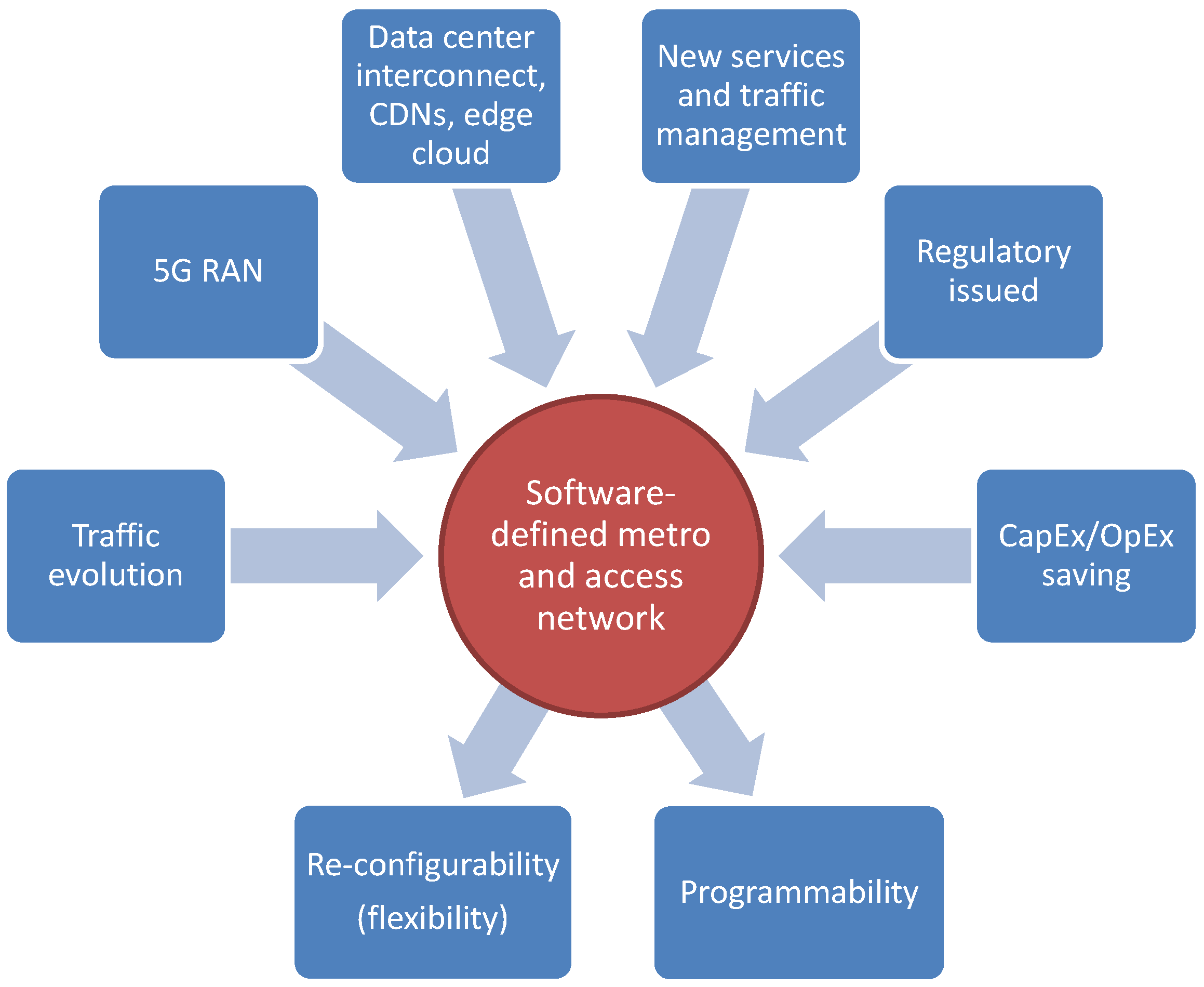
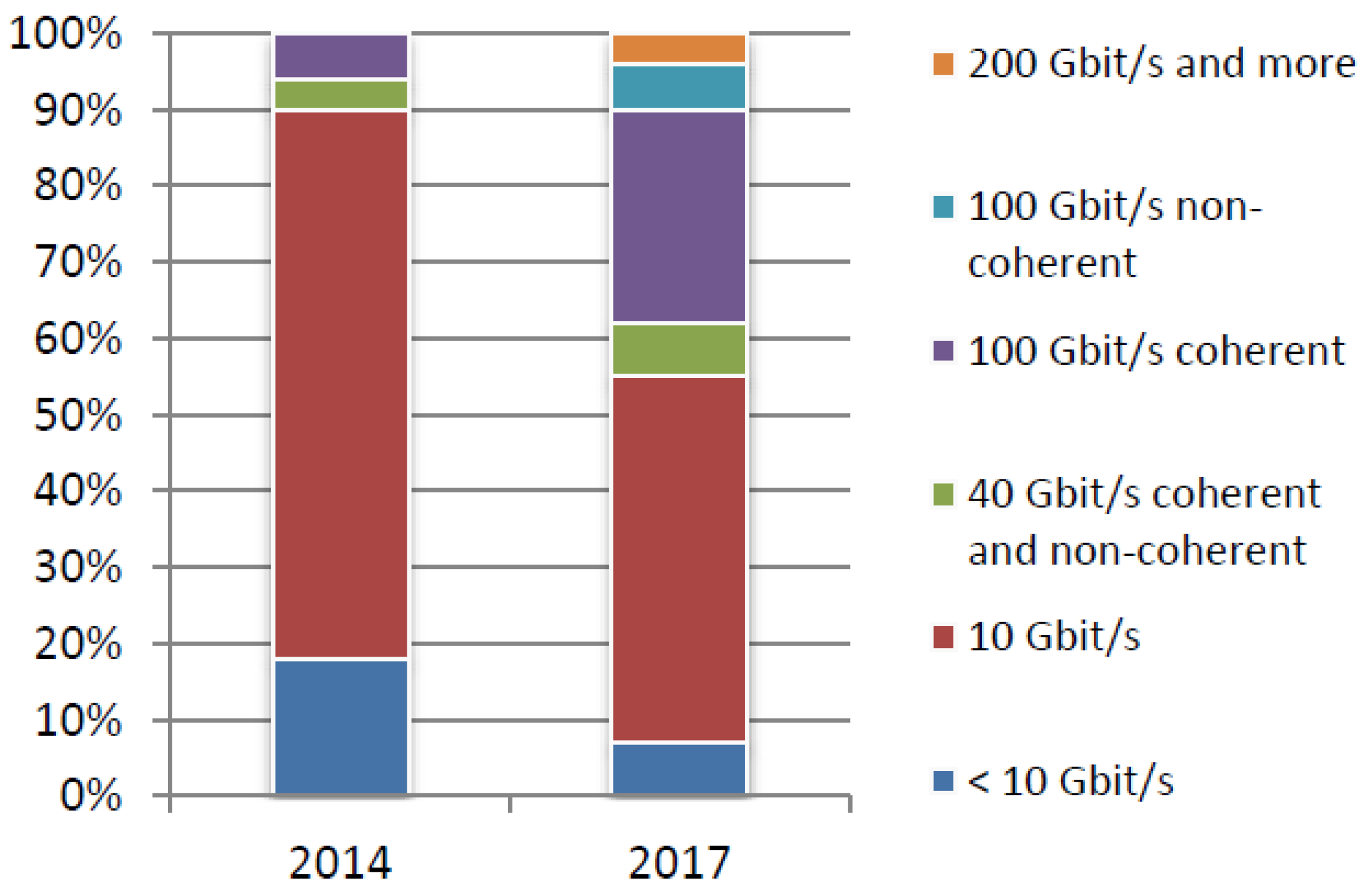
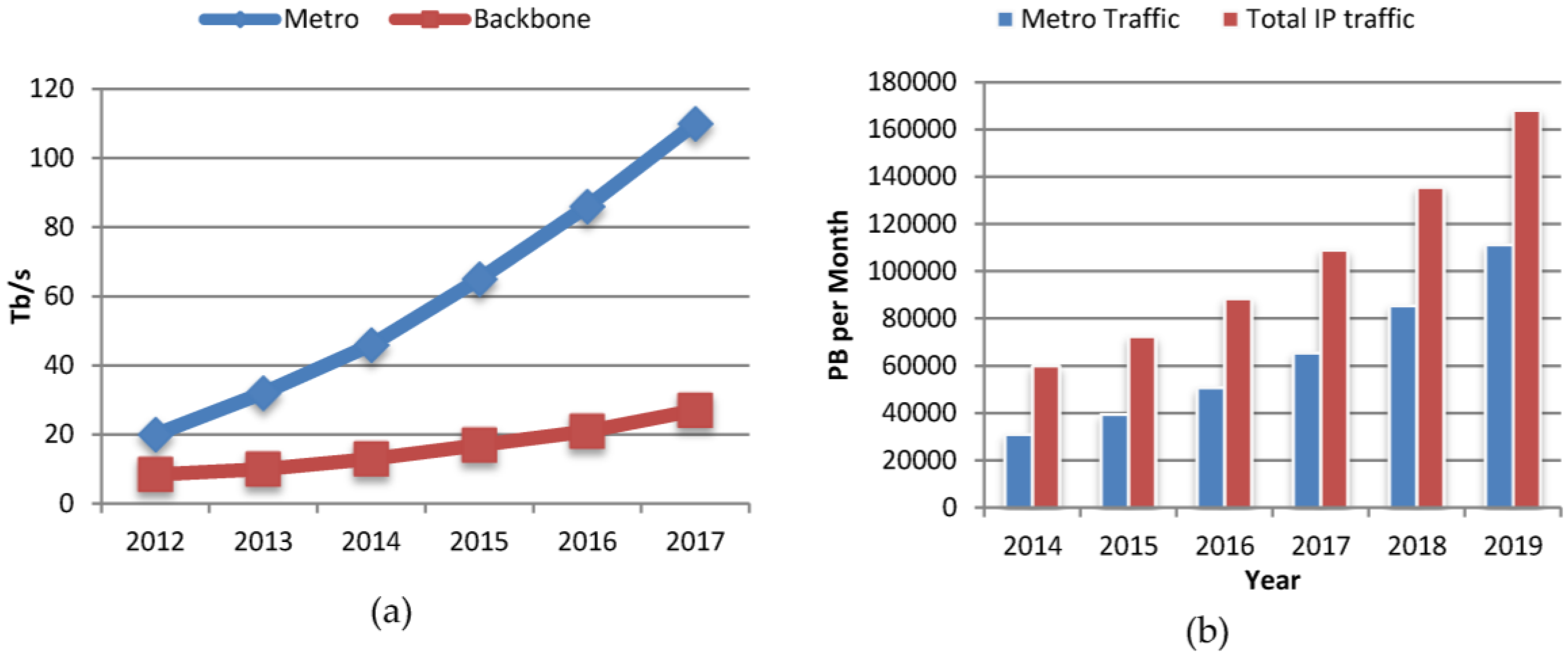

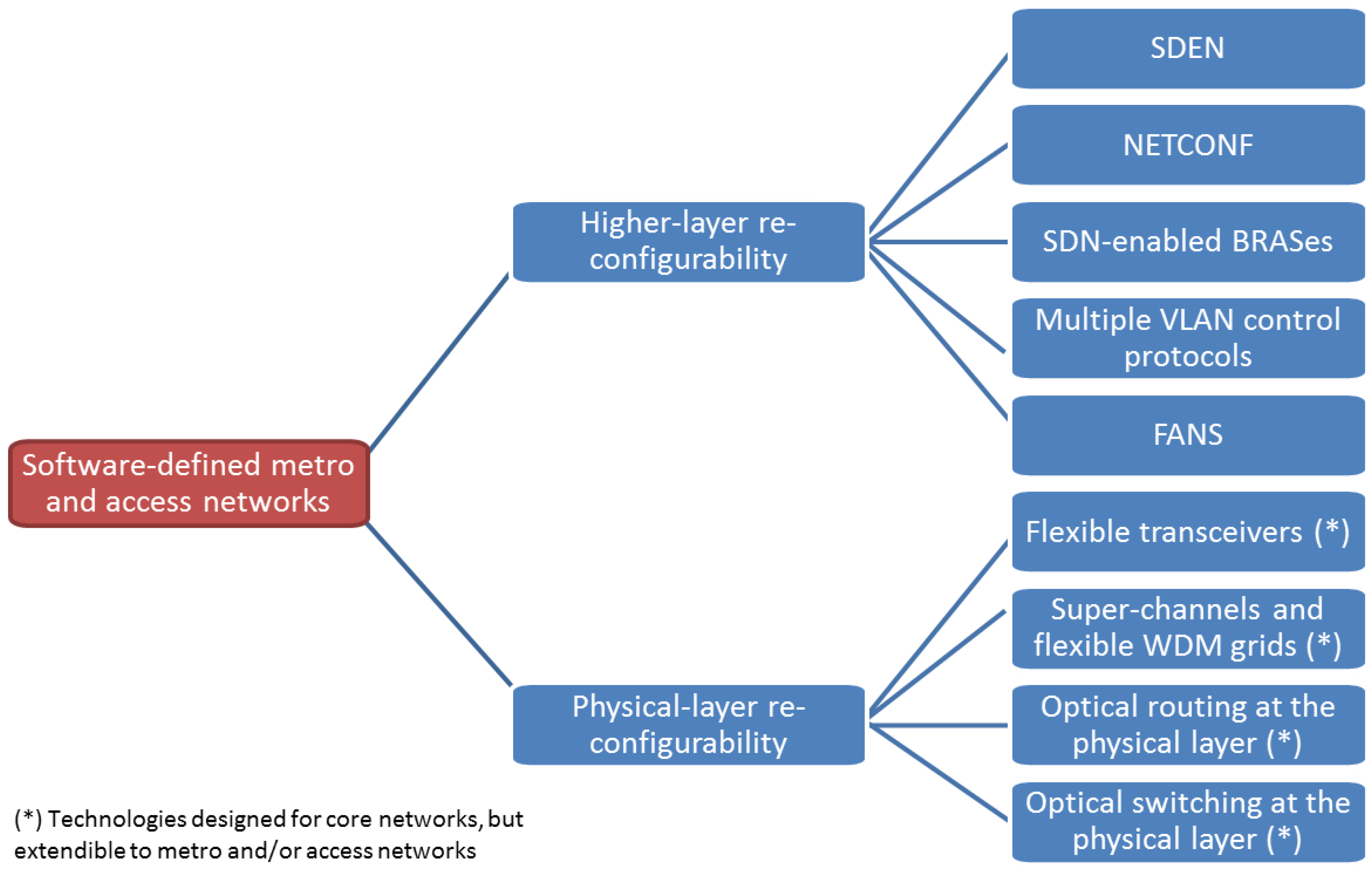
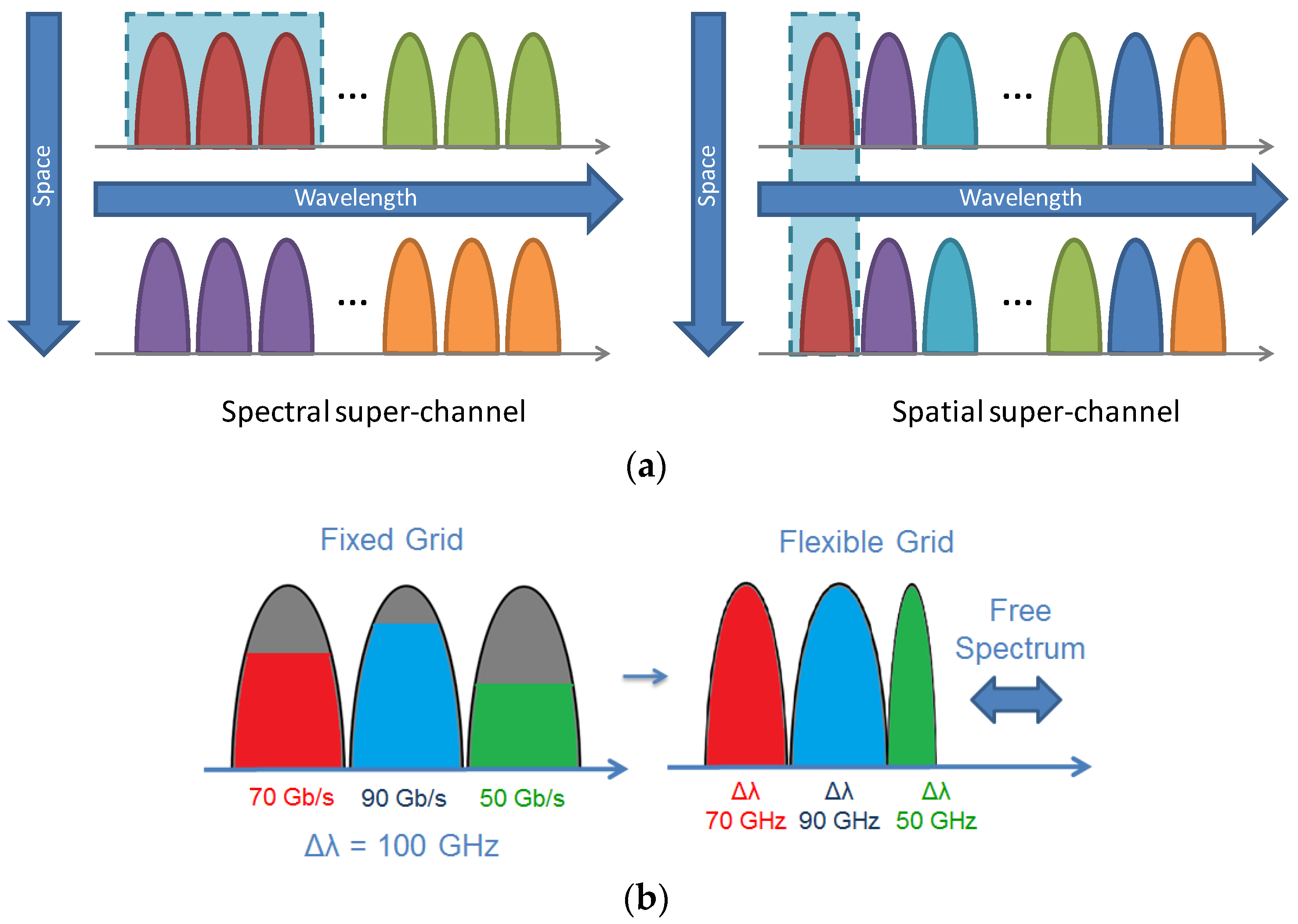
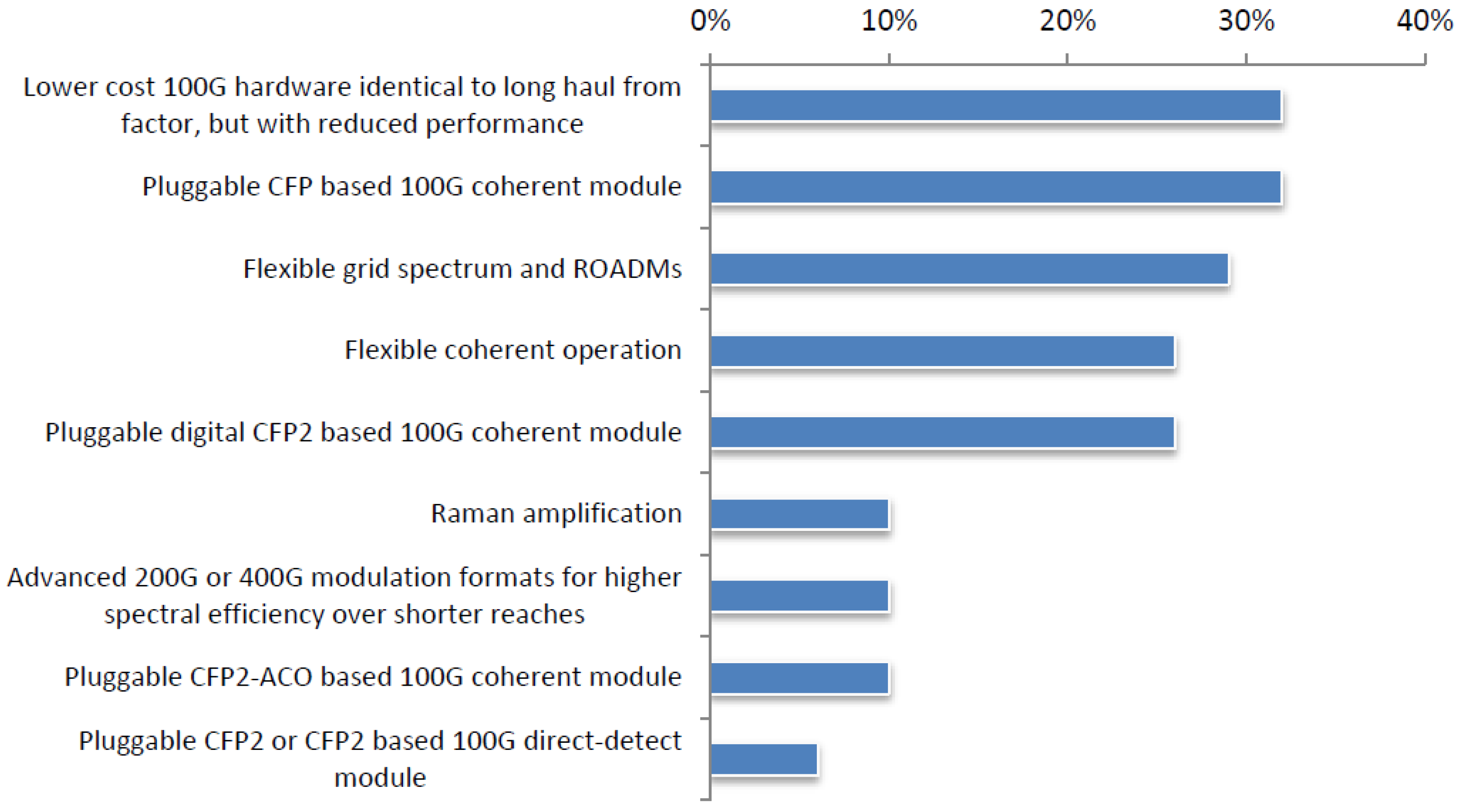
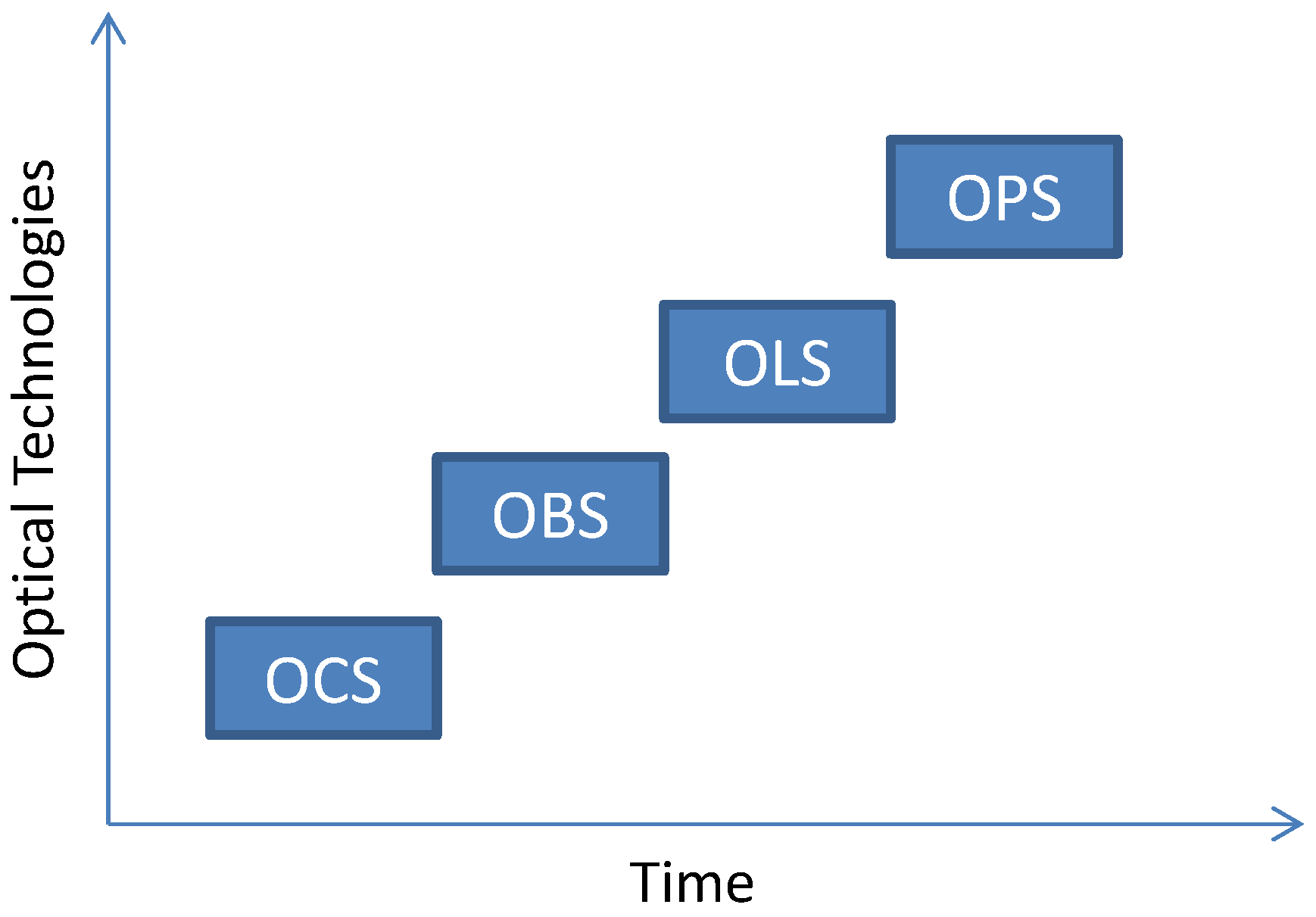

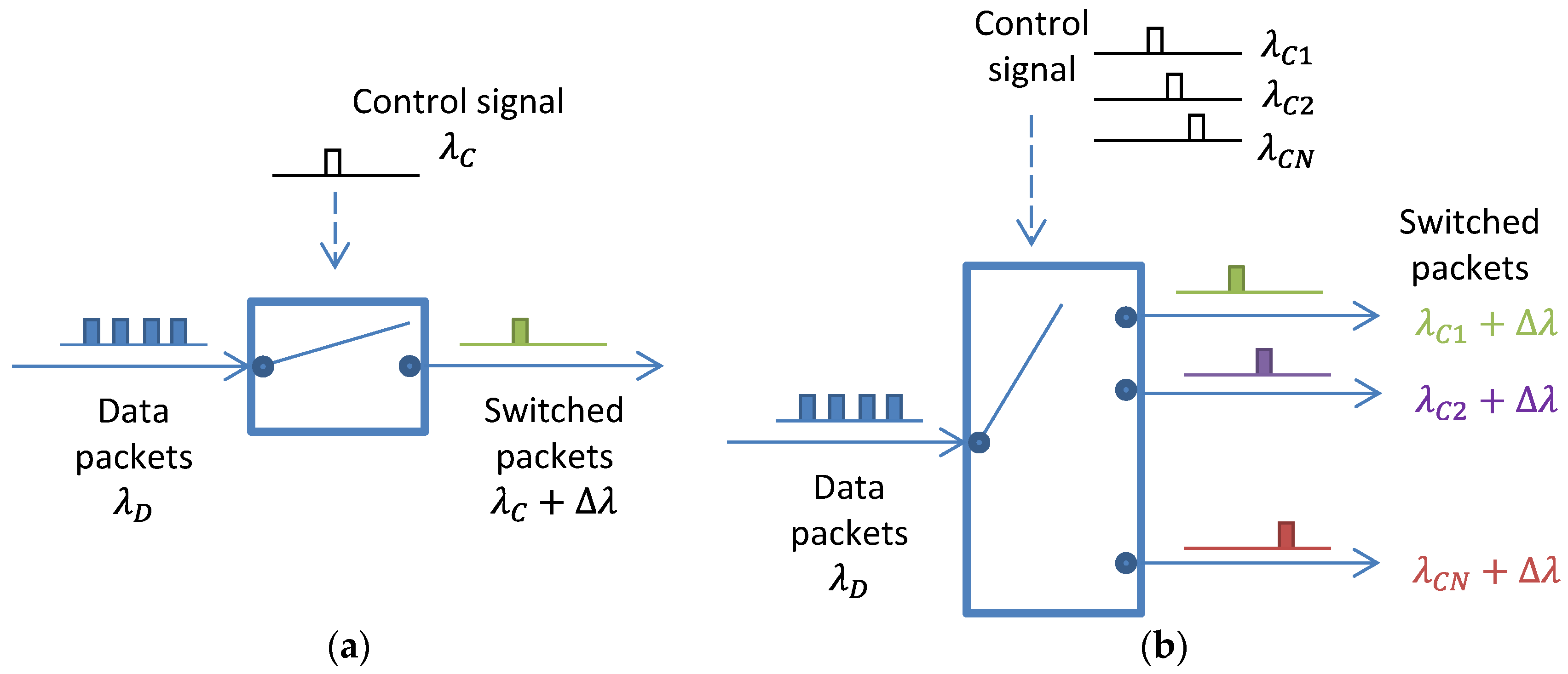

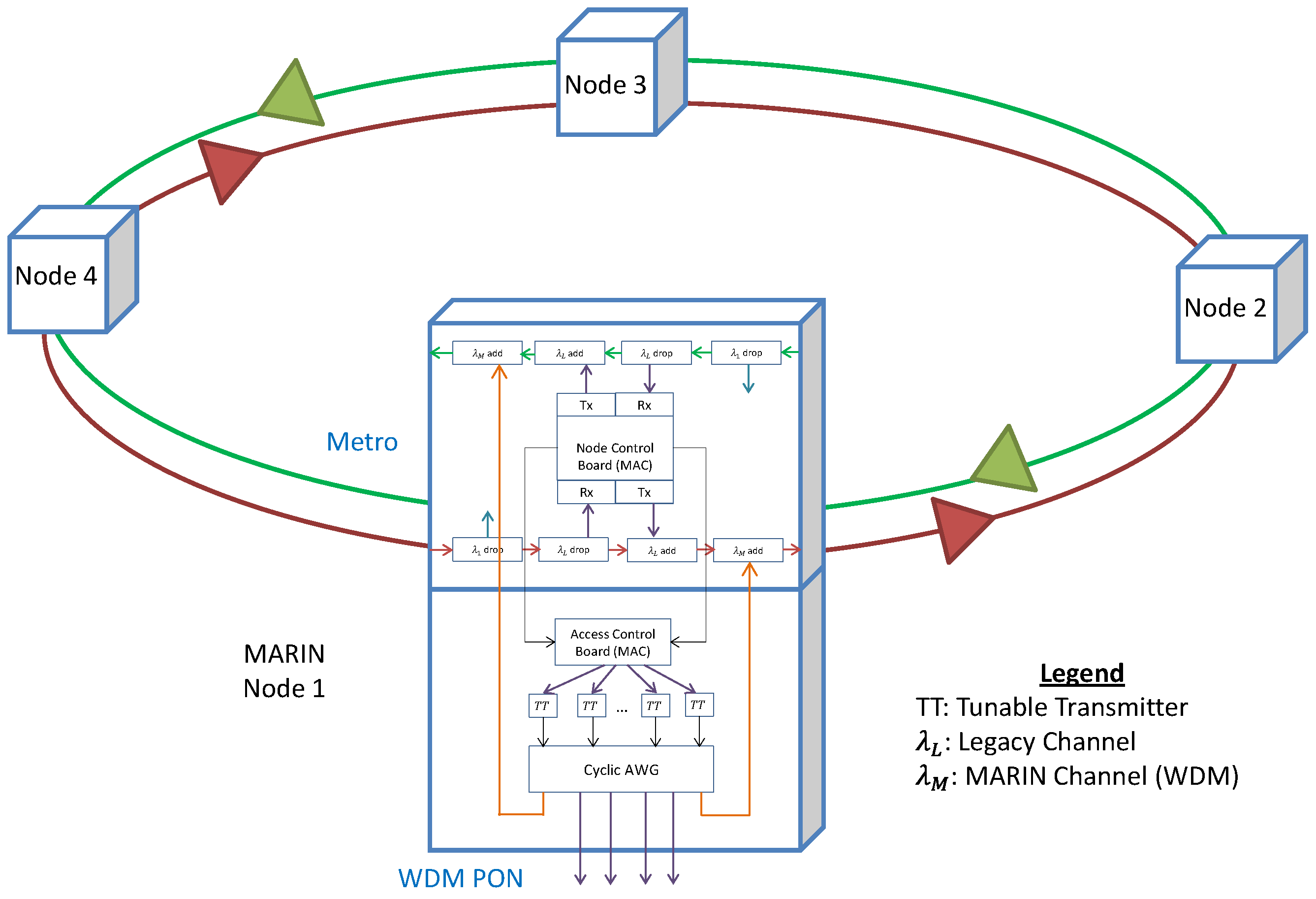
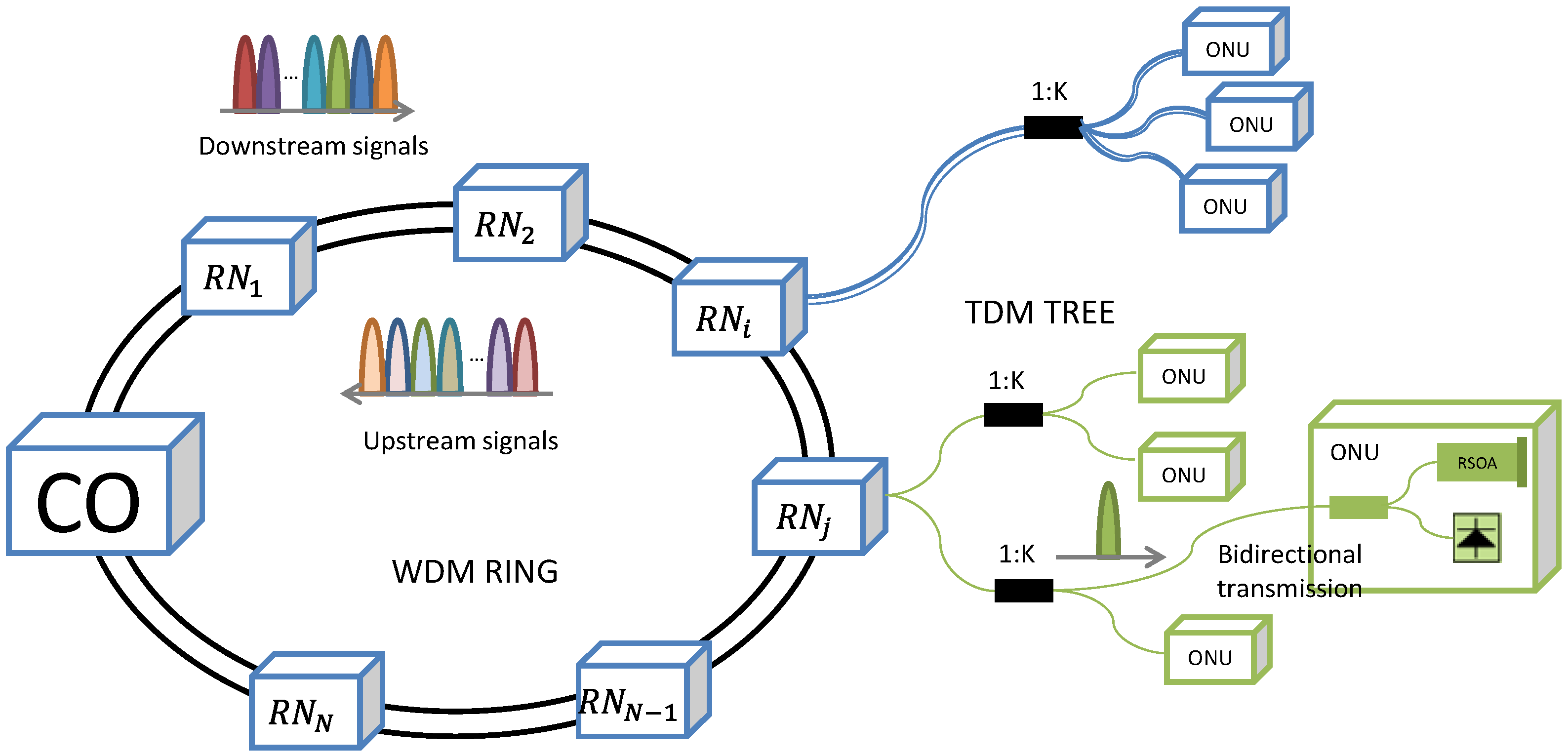
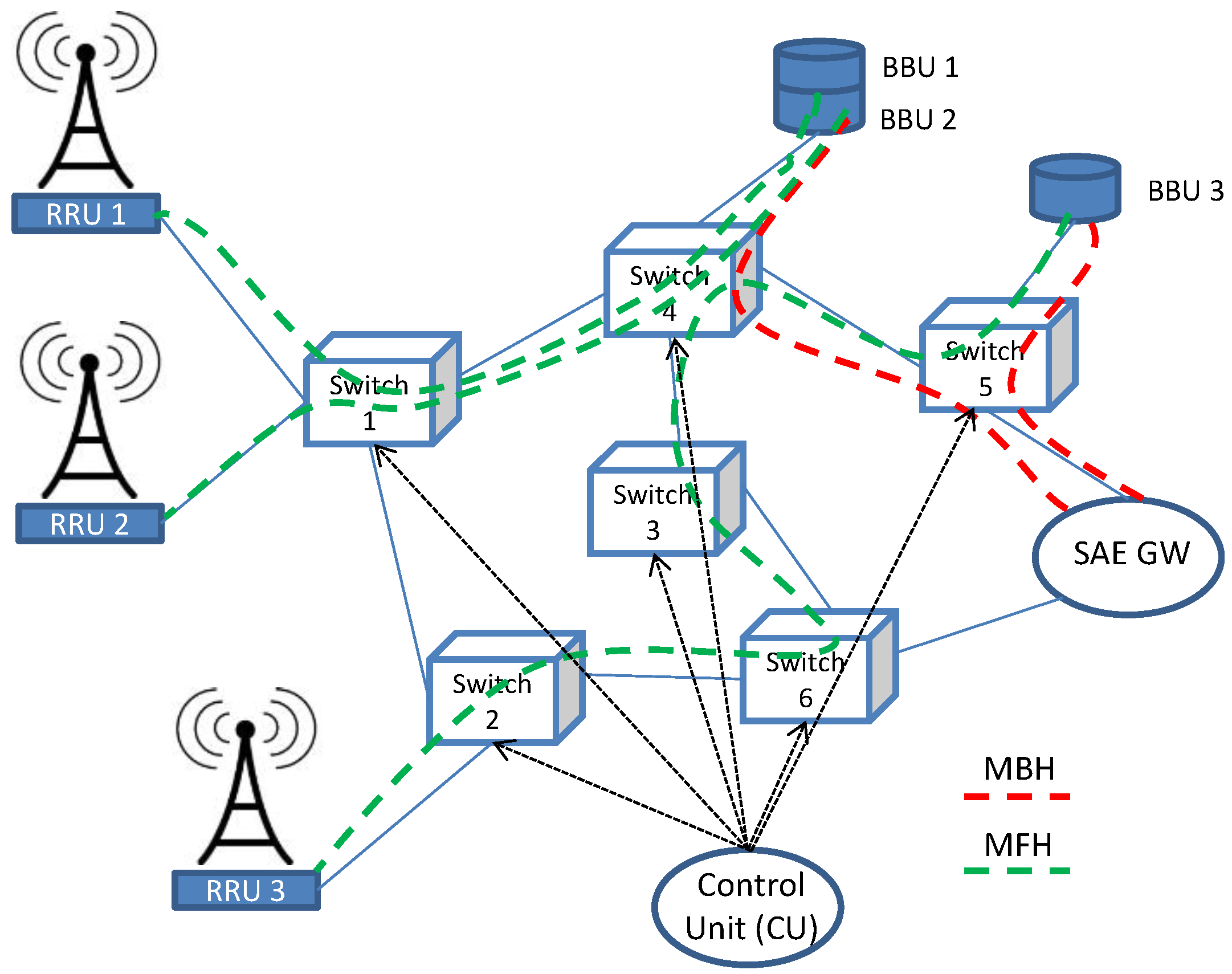
| Technological Trends | Technological Solutions | References for Application in Metro/Access Segments |
|---|---|---|
| Flexible transceivers | Flexible modulations and distance-adaptive transceivers | Metro: [30] |
| Access: [31,32,33] | ||
| Super-channels and flexible WDM grids | Flexible grid | Access: [34,35] |
| Metro: [30,35] | ||
| Spatial super-channels | Access: [36] | |
| Optical routing at the physical layer | Flow routing | Access: [37,38,39] |
| ROADM | Metro: [40,41,42,43,44,45,46,47] | |
| Access: [41] | ||
| Optical switching at the physical layer | OPS, OLS, OBS | Metro: [48,49,50,51] |
| Access: [49,52] | ||
| Flexible modulations and distance-adaptive transceivers | Metro: [30] | |
| Access: [31,32,33] |
© 2017 by the authors. Licensee MDPI, Basel, Switzerland. This article is an open access article distributed under the terms and conditions of the Creative Commons Attribution (CC BY) license ( http://creativecommons.org/licenses/by/4.0/).
Share and Cite
Muciaccia, T.; Passaro, V.M.N. Future Scenarios for Software-Defined Metro and Access Networks and Software-Defined Photonics. Photonics 2017, 4, 1. https://doi.org/10.3390/photonics4010001
Muciaccia T, Passaro VMN. Future Scenarios for Software-Defined Metro and Access Networks and Software-Defined Photonics. Photonics. 2017; 4(1):1. https://doi.org/10.3390/photonics4010001
Chicago/Turabian StyleMuciaccia, Tommaso, and Vittorio M. N. Passaro. 2017. "Future Scenarios for Software-Defined Metro and Access Networks and Software-Defined Photonics" Photonics 4, no. 1: 1. https://doi.org/10.3390/photonics4010001






